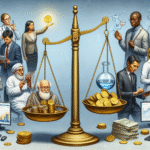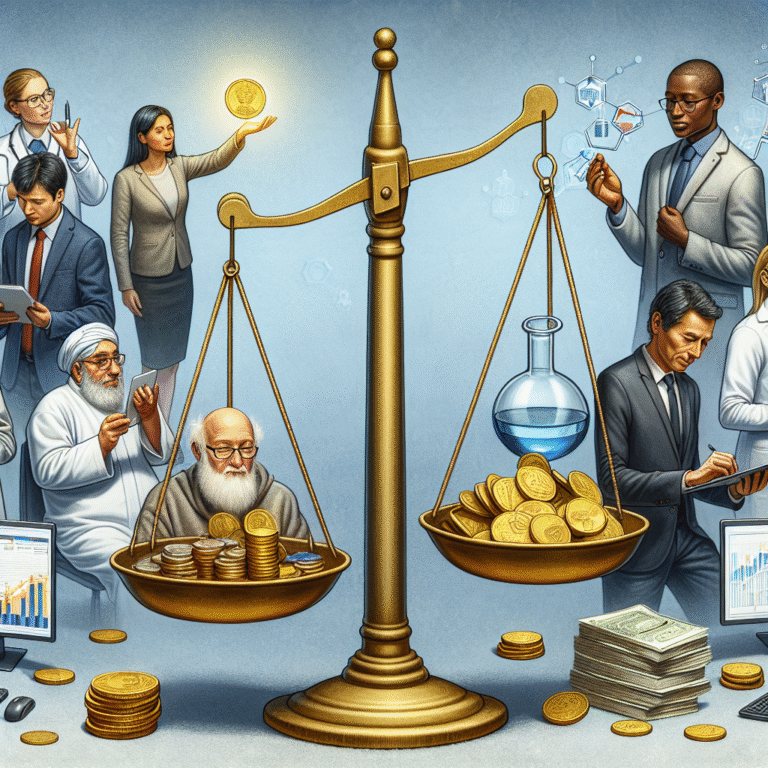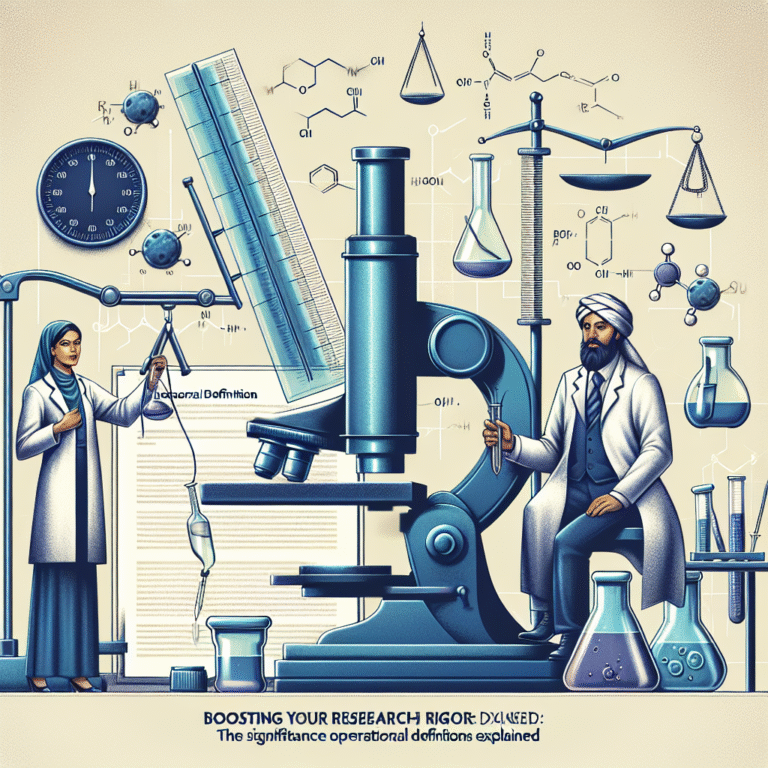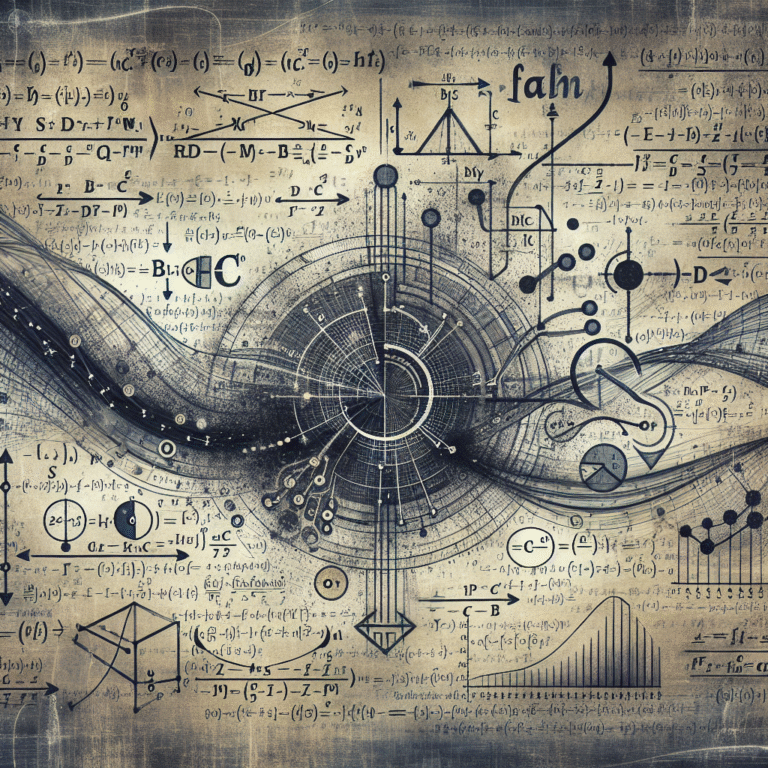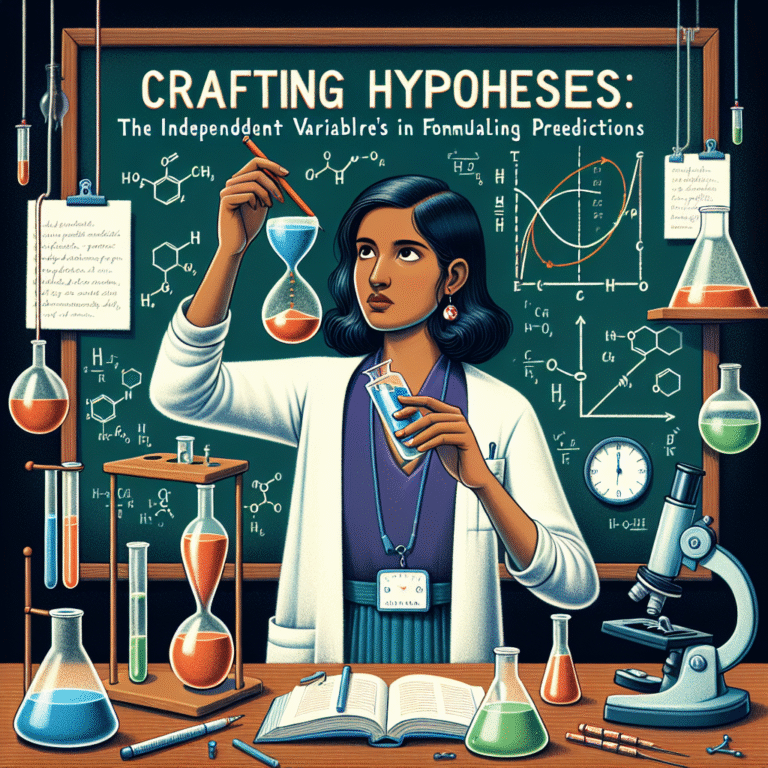
Introduction
Imagine you’re a detective, piecing together clues to unveil a hidden truth. In the realms of research, science, and statistics, that truth often hinges on one pivotal element: independent variables. Understanding the dynamics of these variables can turn a simple hypothesis into a compelling conclusion, offering insights that can change industries, influence policies, and even transform everyday life. In this article, we’ll delve into the journey From Hypothesis to Conclusion: The Critical Importance of Independent Variables, illustrating their impact through engaging case studies, practical insights, and actionable takeaways. Let’s embark on this journey together!
Understanding Independent Variables
What Are Independent Variables?
At the crux of any experimental design lie independent variables—factors that researchers manipulate to observe their effects on dependent variables. Essentially, independent variables act as the cause, while dependent variables serve as the effect. This relationship forms the backbone of hypothesis-driven research.
The Hypothesis-Dependent Relationship
-
Defining the Hypothesis: A hypothesis is an educated guess or a predictive statement that can be tested through research. For example, “Increasing study time will improve test scores.” Here, study time stands as the independent variable.
-
Crafting a Study Design: In a well-structured experiment, researchers can control independent variables while observing changes in dependent variables. This control allows for the assessment of cause-and-effect relationships.
- Drawing Conclusions: As researchers analyze their data, they look for patterns that indicate a strong relationship between the independent and dependent variables. The strength and direction of this relationship help inform conclusions.
The Critical Importance of Independent Variables
Why They Matter
Understanding independent variables is essential for several reasons:
-
Causality: They allow us to establish cause-and-effect relationships. Without independent variables, researchers cannot determine what factors lead to outcomes.
-
Controlled Experiments: They enable controlled experimentation, which is crucial for minimizing bias and confirming results.
- Statistical Analysis: Independent variables are fundamental in statistical models, helping to predict outcomes and clarify complex scenarios.
Crafting Robust Hypotheses: Case Studies
Case Study 1: Education and Test Scores
Overview
Consider a study conducted on the effects of extracurricular activities on student performance. Researchers formulated the hypothesis: “Students who participate in extracurricular activities have higher test scores than those who do not.”
Independent Variable: Participation in extracurricular activities
Dependent Variable: Test scores
Analysis
By controlling for factors like socioeconomic status, attendance, and prior academic performance, researchers can isolate the impact of extracurricular activities. The results could show a significant enhancement in test scores among those involved, reinforcing the assertion that engagement fosters academic success.
Types of Independent Variables
Independent variables can be categorized into two types:
-
Categorical Variables: These variables represent distinct categories, such as gender, education level, or types of therapy. For example, in a study comparing different teaching methods, the independent variable is categorical, reflecting the various methods employed.
- Continuous Variables: Those can take on a continuous range of values, such as age, height, or study hours. An example is examining the relationship between exercise frequency (independent variable) and weight loss (dependent variable).
Designing Experiments Around Independent Variables
Best Practices
-
Randomization: By randomizing subjects into groups, researchers can minimize biases associated with extraneous variables, leading to more reliable conclusions.
-
Replication: Conducting multiple experiments helps confirm findings, strengthening the validity of the independent variable’s influence.
- Blinding: Involving single or double blinding can reduce the risk of bias in participant responses or researcher expectations.
Case Study 2: Marketing Strategies and Sales
Overview
A marketing firm tests two strategies, aiming to determine which leads to higher sales. The hypothesis: “Digital advertising will lead to higher sales than traditional marketing.”
Independent Variable: Type of advertising employed (digital vs. traditional)
Dependent Variable: Sales figures
Analysis
By carefully tracking sales numbers after implementing each strategy in isolated markets, the firm can assess the effectiveness of each approach. The results would not only highlight the importance of digital marketing but also refine future strategies based on the independent variable’s impact.
Common Challenges in Identifying Independent Variables
While the significance of independent variables in research is undeniable, challenges often arise when identifying them. Here are a few common pitfalls:
-
Overlooking External Variables: Researchers may mistakenly consider variables to be independent when they are, in fact, influenced by external factors.
- Correlation vs. Causation Confusion: Just because two variables change together doesn’t mean one causes the other. Distinguishing between these relationships is vital.
Statistical Tools for Validating Independent Variables
To verify the influence of independent variables, researchers use several statistical tools:
-
Regression Analysis: This technique helps quantify the relationship between independent and dependent variables, providing insights into strength and significance.
-
ANOVA (Analysis of Variance): Useful in comparing means across multiple groups, ANOVA helps identify which independent variable has the most substantial effect.
- Chi-Square Tests: For categorical independent variables, chi-square tests can reveal whether observed frequencies significantly differ from expected frequencies.
The Journey from Hypothesis to Conclusion
Understanding the Process
The journey begins with a hypothesis, grounded in research and observation. With independent variables clearly defined, researchers embark on experimentation, collecting data, and performing analysis before finally reaching a conclusion.
-
Formulating the Hypothesis: A strong, clear hypothesis sets the stage for focused inquiry.
-
Conducting Experiments: Precise control over independent variables ensures that observed effects are valid.
-
Data Analysis: Utilizing appropriate statistical tests allows researchers to assess the relationship and significance between the independent and dependent variables.
- Drawing Conclusions: Final insights drawn from the data can lead to further research, policy changes, or practical applications in the real world.
Actionable Insights
-
For Researchers: Pay close attention to the definition and control of independent variables. Ensure they’re isolated effectively to yield reliable results.
-
For Businesses: Analyze the independent variables impacting your outcomes, whether through marketing strategies or product development.
- For Educators: Understand how various teaching strategies (independent variables) can affect student performance (dependent variables) to tailor educational practices.
Conclusion
The journey From Hypothesis to Conclusion: The Critical Importance of Independent Variables is a powerful narrative that underscores the foundation of research and analysis. As we’ve explored, these variables not only help clarify cause-and-effect relationships but also empower us to make informed decisions across various sectors.
By mastering the art of defining, controlling, and analyzing independent variables, researchers and professionals alike can transform hypotheses into profound conclusions that drive progress and innovation. As you move forward, remember this critical insight: it’s not just about gathering data; it’s about interpreting it through the lens of independent variables that holds the key to discovery.
FAQs
1. What is the difference between independent and dependent variables?
Answer: Independent variables are those that are manipulated or changed to observe their effects on dependent variables, which are the outcomes being measured.
2. Why are independent variables critical in research?
Answer: They establish cause-and-effect relationships, allowing researchers to analyze how changes in one factor influence another.
3. How can I identify independent variables in my research?
Answer: Clearly define the factors you will manipulate or change in your experiment. Consider what you want to prove or test.
4. What types of independent variables are there?
Answer: Independent variables can be categorical (distinct groups) or continuous (variable range of values).
5. How do statistical analyses help in understanding independent variables?
Answer: Statistical analyses like regression and ANOVA help quantify the relationship between independent and dependent variables, providing insights into their effects and significance.
This comprehensive article highlights the importance of independent variables across various fields, encouraging readers to consider their critical role in transforming hypotheses into meaningful conclusions.
